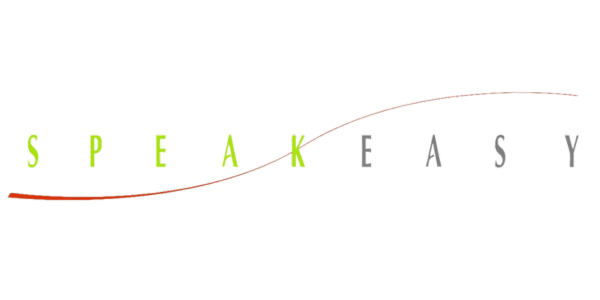
15 Jul Mastering Cross-Cultural Communication in Business
Reading Time: 3 minutesThe modern business landscape thrives on collaboration. Teams span continents, and effective communication is the bridge that connects them. However, when cultures collide, clear communication can become a hurdle. Mastering cross-cultural communication is a necessity for leaders who want to foster better collaboration, boost productivity, and strengthen international relationships.
Join us as we explore the principles and strategies to help leaders enhance their cross-cultural communication skills, paving the way for a more cohesive and efficient workplace.
Key Principles of Effective Cross-Cultural Communication
To communicate effectively across cultures, it’s crucial to understand and apply certain key principles. These include cultural awareness, active listening, empathy, and adaptability.
- Cultural Awareness: Recognizing and appreciating the differences in cultural norms, values, and practices is the first step. For instance, in some cultures, direct eye contact is a sign of confidence, while in others, it might be seen as disrespectful. Understanding these nuances can prevent misunderstandings and foster a more respectful communication environment.
- Active Listening: Paying close attention to what is being said without rushing to respond is vital. Active listening involves hearing the words and understanding the context and emotions behind them. This approach helps in building trust and clarity in communication.
- Empathy: Putting yourself in someone else’s shoes can bridge cultural gaps. Empathy involves understanding and sharing the feelings of others, which can lead to more meaningful and effective interactions. For example, acknowledging and respecting cultural holidays and practices can show employees their backgrounds are valued.
- Adaptability: Being flexible and willing to adjust your communication style to suit different cultural contexts is key. This might mean using simpler language, incorporating visual aids, or adjusting the pace of your speech. Adaptability ensures that your message is understood regardless of cultural differences.
Common Barriers to Cross-Cultural Communication and How to Overcome Them
Cross-cultural communication is fraught with potential barriers that can lead to misunderstandings and conflicts. Common barriers include language differences, non-verbal misinterpretations, and cultural stereotypes.
- Language Differences: Language barriers can lead to miscommunication and frustration. Even when both parties speak the same language, variations in slang, jargon, and idioms can cause confusion.
- Non-Verbal Misinterpretations: Non-verbal cues such as gestures, facial expressions, and body language can vary significantly across cultures. A gesture that is positive in one culture may be offensive in another.
- Cultural Stereotypes: Preconceived notions about other cultures can hinder open and effective communication. Stereotypes can lead to misunderstandings and a lack of trust between team members.
Strategies for Enhancing Cross-Cultural Communication Skills in Your Team
Addressing these barriers requires deliberate strategies that promote understanding and inclusivity.
- Language Training: Offering language training to employees can significantly reduce communication barriers. This could include formal language classes or providing resources for self-study.
- Cultural Sensitivity Workshops: Regular workshops that educate employees about different cultures and their communication styles can enhance cultural awareness. These sessions can include role-playing exercises, guest speakers, and interactive activities.
- Open Dialogue: Encouraging open dialogue about cultural differences can help address and resolve misunderstandings. Creating a safe space where employees feel comfortable sharing their experiences and asking questions fosters a more inclusive environment.
- Employing Diverse Teams: Building teams with diverse cultural backgrounds can naturally enhance cross-cultural communication. Diversity brings a variety of perspectives and approaches to problem-solving, which can lead to more innovative and effective solutions.
Mastering cross-cultural communication is a continuous journey that requires commitment and effort. Through embracing cultural awareness, active listening, empathy, and adaptability, leaders can navigate cultural differences more effectively.
How Leadership Shapes Cross-Cultural Communication in Business
Leadership plays a pivotal role in fostering a culture of effective cross-cultural communication. Leaders set the tone by modeling good communication practices, demonstrating cultural awareness, and encouraging open dialogue within their teams. When leaders actively engage in and promote cross-cultural understanding, it creates an environment where all employees feel valued and heard. For instance, leaders who make a point of learning about their team members’ cultural backgrounds and incorporating diverse perspectives into decision-making processes can significantly enhance team cohesion and productivity.
Bridge the Gap with Speakeasy’s Communication Training
Cross-cultural communication is essential for business success, and strong leadership is key to mastering it. For more than 50 years, Speakeasy has guided leaders and managers in honing their communication abilities through in-person programs and personalized coaching.
Our approach focuses on fortifying the impact and effectiveness of managerial communication by nurturing clear messaging, empathetic listening, strategic storytelling, and the ability to influence teams and stakeholders. Investing in Speakeasy’s Communication Training for Leadership & Management equips leaders with techniques for clear, passionate, and precise communication, enhancing decision-making, team engagement, conflict resolution, trust, and future readiness.
Visit Speakeasy’s Leadership Communication page for more details and to get started today.

